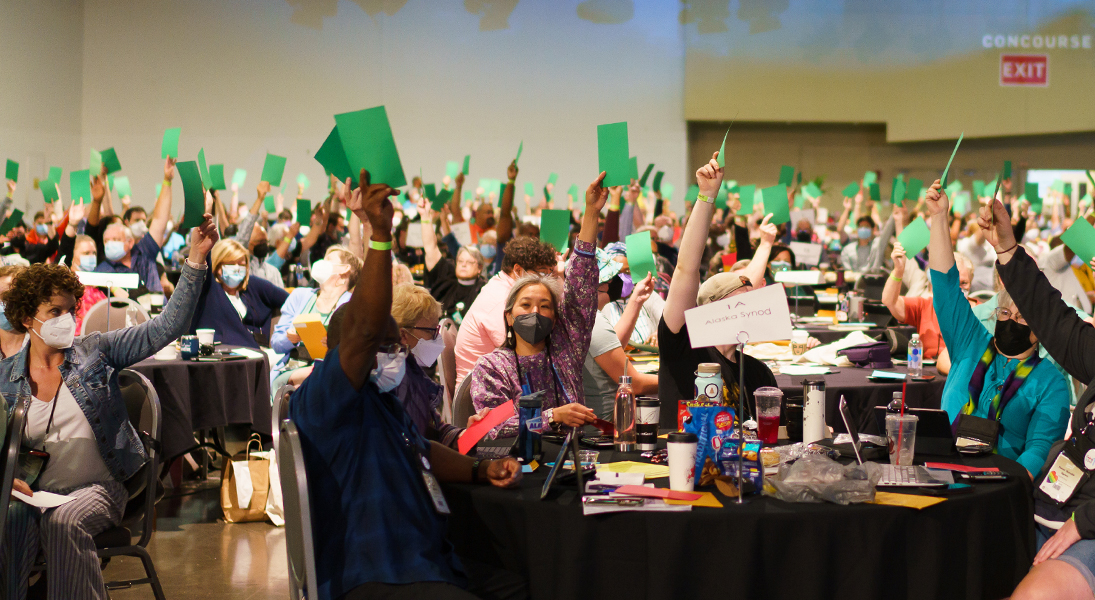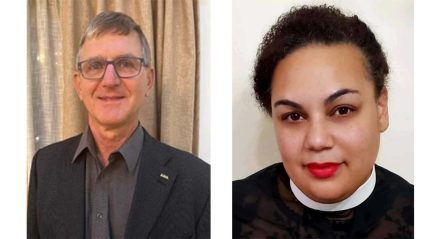In 2022 the ELCA Churchwide Assembly directed the formation of the Commission for a Renewed Lutheran Church (CRLC), a diverse body of leaders who would examine the church’s governing structure, clarify its purpose, and evaluate how its three expressions—congregations, synods and the churchwide organization—can better live into the ELCA’s shared mission. What emerged isn’t a new constitution or a complete revamp but rather a bold road map toward renewal, grounded in a theological vision and urgent call for structural transformation.
As the 2025 assembly approaches, the CRLC’s final report and the Church Council’s initial responses offer members a clear invitation: to reform its structure, not for institutional preservation but for the sake of the gospel and the dignity of all people.
The CRLC, modeled in spirit after the Commission for a New Lutheran Church that brought about the ELCA more than 35 years ago, was appointed by the Church Council in April 2023. The 34-member group brought together lay leaders and rostered ministers across a wide range of demographic diversity to serve as a vessel for listening and recommendation.
The CRLC, however, is not a decision-making body. “We have zero authority to say that anything gets done,” said Carla Christopher Wilson, CRLC co-chair. “We compile a report of recommendations that we then give to the council, who accepts that report, and then they have the ability to decide what gets acted upon.”
The commission’s work spanned nearly two years of education, listening and discernment, engaging over 1,200 people through surveys and sessions, with special attention to youth and historically marginalized communities.
“There was not a single Black, Indigenous or person of color … not a single person who lives with disabilities … who did not break down in actual tears,” Wilson said. “We just cannot claim to be a church that prioritizes being church together if there are still so many individuals who don’t feel that they have a place of safety.”
Findings and tensions
The commission developed 13 recommendations addressing governance, inclusion and the adaptive capacity of the church. Among its key findings:
- Governance structures are inconsistent and inequitable across synods and congregations.
- There is deep confusion about the roles of each expression of the church.
- The ELCA’s current structure hinders responsiveness to today’s needs, especially in financial coordination and racial equity.
- Ministries for those who live outside of the mainstream expectations of a church—such as campus, multicultural, youth, outdoor and social outreach ministries—often lack a voice in formal governance.
That doesn’t mean the response is something that any one commission, or even the church, can do overnight—something even the CRLC found surprising. “There is no such thing in our constitution as a reconstituting convention,” Wilson said. The only way to change the constitution in the current structure is to replace through amendment, where every part of the document must be named and replaced.
In other words, as Wilson said: “The only way to rewrite and restructure the entire constitution in one go would essentially be to dissolve the churchwide organization.”
Acknowledging this reality, the commission proposed a phased approach, recommending amendments rather than dissolution. The Church Council has responded by forming task forces and committees to continue the work, including on interdependence, financial coordination, and diversity, equity, inclusion and accessibility (DEIA) standards.
One of the strongest themes in both the CRLC’s work and the council’s actions is the central commitment to dismantling racism. The commission’s first recommendation urged immediate accountability structures and compliance incentives to center equity across the ELCA. The council responded by strengthening the Strategy Toward Authentic Diversity (STAD) Advisory Team and encouraged the team to develop DEIA standards that congregations and synods could adopt.
One of the strongest themes in both the CRLC’s work and the council’s actions is the central commitment to dismantling racism.
Another major recommendation was formally establishing an Association of Synod Vice Presidents to ensure lay voices are resourced, trained and connected. The council adopted this as a continuing resolution in March. This new association is charged with providing orientation, worship and leadership development for lay leaders—a move to actualize the church’s desire for shared leadership across roles.
The CRLC also wrestled with the perception and impact of the ELCA’s name. In today’s hyperpolitical world, “evangelical” has become a barrier to outreach, which Wilson acknowledged resulted in a discussion among some people that it should be reclaimed. The CRLC didn’t recommend a name change but urged continued theological and strategic reflection on the church’s public identity.
As the Churchwide Assembly prepares to receive these recommendations, the ELCA faces a moment of truth. The recommendations are not meant to be cosmetic actions to placate those who prefer to keep the status quo. They are seen as structures that would require a faithful adjustment of the church to match the gospel’s calling. “Being ELCA needs to mean something. Otherwise, we can’t effectively evangelize,” Wilson said.
The CRLC’s report, grounded in the stories of hurt and hope across the church, calls the ELCA not to abandon what it has been but to embody what it is called to become: a church always being reformed.
The Church Council has laid the groundwork through constitutional amendments, leadership development and theological clarification. The next step belongs to the voting members in Phoenix and everyone willing to be shaped anew by the Spirit. “I feel hopeful in the Holy Spirit,” Wilson said. “There is so much good work happening. There are people that love God and love this church and love their neighbors.”
Correction: This story originally misstated that the Church Council can mandate congregations and synods to develop DEIA standards. That is not accurate both from what happened and from council’s ability based upon the ELCA’s constitution. The sentence should have been “The council responded by strengthening the Strategy Toward Authentic Diversity (STAD) Advisory Team and encouraged the team to develop DEIA standards that congregations and synods could adopt.” Living Lutheran regrets the error and apologizes for any confusion this caused.







